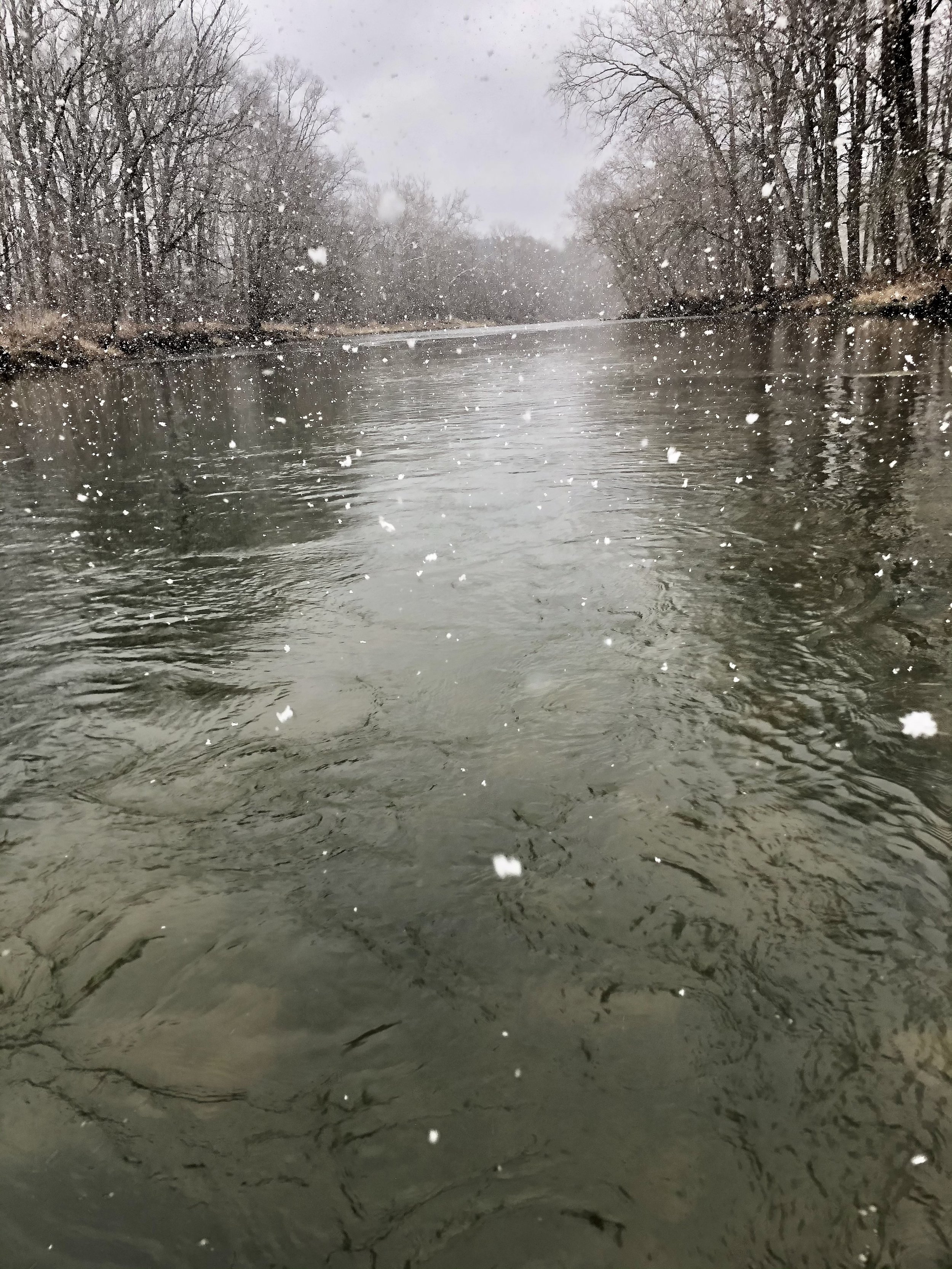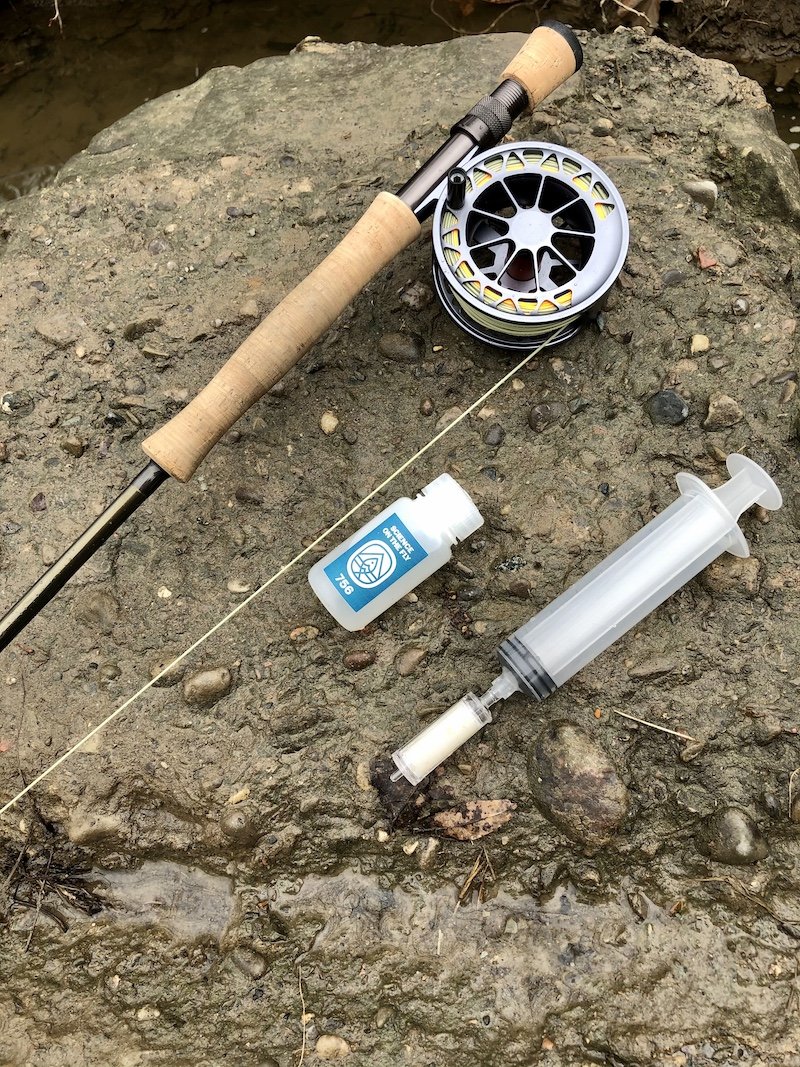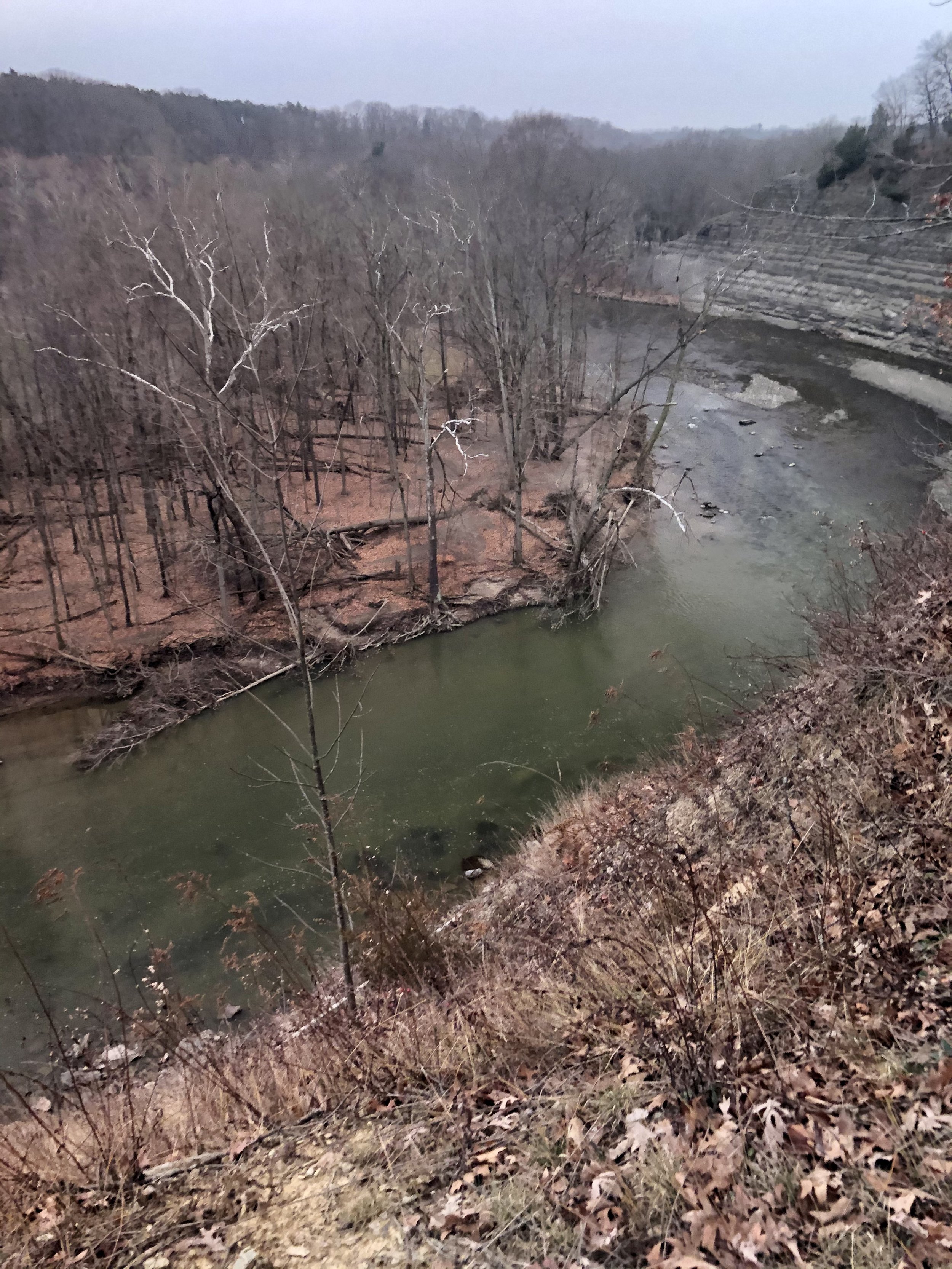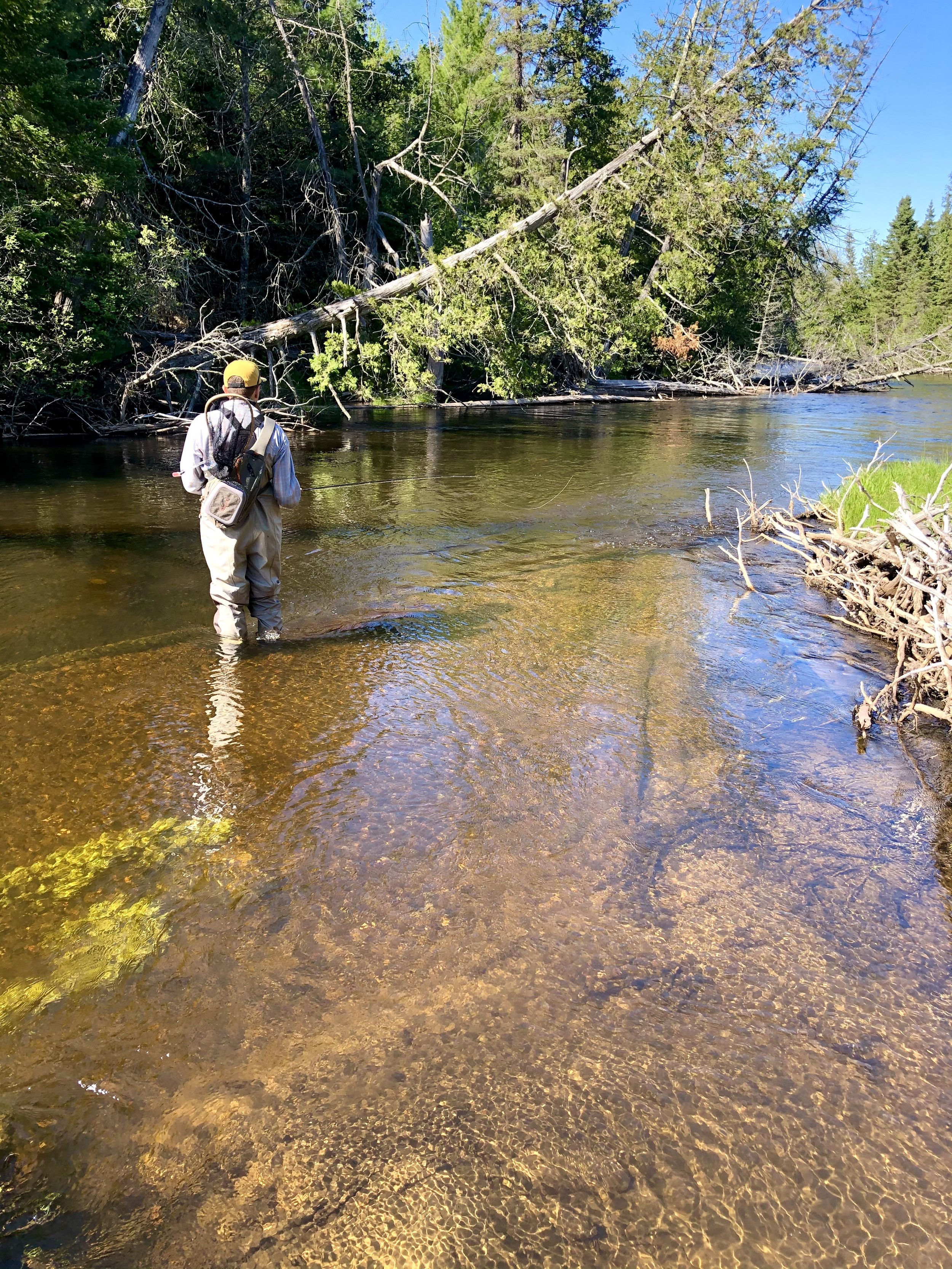Featured Volunteer: Eric Linnevers of Ohio
Eric Linnevers, a Science on the Fly volunteer since January 2021, is fishing his local river in Ohio.
Eric Linnevers started sampling for Science on the Fly in January 2021. He collects samples from four locations around Cleveland Ohio, including three on the Rocky River and one on the Cuyahoga river. He is an active member of many fly fishing and watershed organizations and has helped organize river clean up days on the shores of his local watershed. Eric’s data can be viewed on our public data sheet. In the data, you will see that Eric’s sample locations all have relatively high nitrate concentrations, with the Rocky’s highest concentration being 1323 micrograms NO3-N per Liter and the Cuyahoga being 1858 micrograms NO3-N per Liter. The Rocky and Cuyahoga rivers both have average levels of phosphate and dissolved organic carbon concentration, being under 25 micrograms PO4-P/Liter and 20 milligrams C/Liter, respectively. You can see the relative concentrations of nitrate, phosphate and dissolved organic carbon by looking at our interactive maps.
Eric Linnever’s Science on the Fly sampling locations outside of Cleveland, Ohio.
1) What is your story? Who are you? What do you do?
Eric: I was born in Cincinnati, OH and now live in Cleveland. Life has had me living in 3 different states over the last 7 years. I have a degree in Geography/GIS but professionally I am a Consultant for a software company. When I am not fishing, I am spending time with my beautiful wife, family and friends.
2) What is your fly fishing background?
Eric: I first picked up a fly rod in 2012 on a local bass pond. I had been fishing since I was young, but never had that much fun pond fishing. You could say that I fell off the deep end because since then, I have worked in shops, fished all over the Midwest and Canada and can be called a shop bum for how much time I spend at the local shop. I have been blessed with meeting amazing people along the way and learning from them and about them. I am an active member in several different clubs/organizations including Science on the Fly, Trout Unlimited, Cleveland Museum of Natural History Trout Club, and Anglers of the Au Sable. These organizations are the foundation to why I fish and why I work to protect the waters we stand in.
3) What is in your 'backyard'? What is your local watershed/river and what significance does it have for your local economy?
Eric: Being in Cleveland, I have ample access to a lot of the Midwest’s best waters. Central PA, Northern Michigan and the Smoky Mountains are all within a 6 hour drive. My ‘backyard’ is the Rocky River. The Rocky is a byproduct of glacial movements, as are most NE Ohio rivers. The substrate of the river varies from hard shale shelves, cobble/gravel and silt. Flowing from South to North, the river is the home to several game species, gobies, darters, turtles, beavers, mink and a sanctuary for migrating waterfowl. As a warm water stream, with the exception of the winter, smallmouth bass are the primary targets from April to October. When the river heats up in the spring, the Rocky receives a run of smallmouth from Lake Erie into the system. The reason for this run is unknown and is being independently researched. From October to April, migratory rainbow trout are the primary targets when they move from the lake to spawn.
The Rocky is surrounded by publicly accessible land. Cleveland Metroparks manages the majority of the river valley and areas surrounding the watershed. Park management does a fantastic job at allowing access in a state that does not particularly favor public access. With the Rocky being an urban river with several communities surrounding it, the economic impact of the river would be hard to measure. In the winter you have an influx of wading anglers, while in the summer, the Rocky houses several marinas and kayak launches. The economic impacts of the river aren’t contained to just water-based sports. There is a paved path that goes through the river valley that is connected to 100 miles worth of trail.
4) Since you started fly fishing, or fishing, have you noticed any changes in your watershed/fishery? (If not, that's totally fine too!)
Eric: Over the years, the changes have been pretty standard for an urban river. We see exponential increases in flows during rain events, resulting in bank erosion and changes in the river channel. Most commonly you will see scour holes increasing in size and large trees moving from year to year. I like to describe the Rocky as a rain gutter, it takes all the urban areas water into it’s shale channel and shoots it out into Lake Erie. It is very common to see massive increases in discharge and then a retreating rate of 50cfs and hour after a rain event. Here is an example of our most recent blow out and retreat:
Rocky River in Ohio with flows reaching a high of 1,010 cfs and quickly retreating in October 2021.
Pollution wise, the majority of the Rocky’s problem comes from phosphates and nitrates leaching into the watershed. This comes from residential fertilizer use (northern stretches) and from agricultural operations (southern stretches). Cleveland Metroparks manages the riparian zone with a watchful eye, mandating the necessary buffers and maintaining them. Other citizen-led groups like the Rocky River Watershed Council and Trout Unlimited, keep an eye on changes and lobby for the river. Additionally, the Metroparks fisheries biologist is readily available to answer any questions concerned citizens may have.
5) Where did your passion for climate-friendliness and protecting your watershed come from?
Eric: In my hometown watershed, Little Miami River, we were always aware of stretches of unproductive water due to urbanization and industry, but that was just “the way it is”. During my college years I began to look more into the changes around my favorite watersheds using GIS software and aerial imagery. This started to illustrate why and where those damaged waters were. Patagonia’s film, DamNation, really lit a fire under me. Seeing how the majestic rivers of the Pacific Northwest could be and still are damaged, made me realize that this can happen anywhere. After viewing the movie at home, I worked with a local outdoors shop to screen the film on campus. We received a large turn out that really showed me how many people care about water resources and want to learn. This was the start of my volunteer efforts to help protect our watersheds.
6) Why do you feel it is important to contribute to the research of your watershed health? What is this research going to tell us about our future and the actionable steps that are needed?
Eric: If we, as citizens, are going to leave our watershed management up to one or two governing bodies, it can likely fall to the wayside and be buried by bureaucracy. The Cuyahoga River is a perfect local and national example of this. For years, the state wasn’t checking for industrial discharges and the river was an oozing mess until the enactment of the Clean Waters Act. In our fast-paced modern world, we need to catch the pollutants and make changes before a river can catch fire, not after. Historically, state natural resources departments are underfunded and can only react to the changes in a watershed. As citizen scientists and conservationists, we can be the ones to keep an eye on the resources, hopefully to stop any further damage. Preemptive action, not reaction will save our watersheds for those to come.
As for the Rocky, being an urban river, I think educating local residents on their impacts is the first step. With Science on the Fly’s data, we can show a visual illustration of what is happening, where it is happening and then help put mitigation efforts into place.
Rocky River water sample collected by Eric Linnevers.
7) How can we inspire more people to give a damn about protecting our rivers?
Eric: To start, I think getting more people outside is the best way to get people to care. As anglers, keeping our spots close to the chest is commonplace. If people don’t see the beauty of the resource, how can they care to protect it? To many in this area, the Rocky River and its surrounding park are simply a reprise from the hustle and bustle of city life. Educating residents on the complexity and sensitivity of the watershed will only be impactful if they see it through a different lens.
8) To go along that last question, how can we inspire more people to give a damn about creating or enforcing policies focused on watershed health and/or climate change? What is its importance to you?
Eric: GET OUTSIDE. I cannot say that enough. I have taken many friends and relatives on hikes, showing them where the flooding has created deep holes and cut banks over a short period of time. Make fishing about more than the fish. Educate ourselves on river structure and dynamics and then pass along that information. If you see fish in a particular spot one year, and not the next, look for clues along the banks and work your way to the holding areas. Was there a rockslide or massive erosion upstream? How is the water flowing into the area now? Asking ourselves these questions and not holding them to ourselves is a big step.
9) Since joining SOTF, have you observed your watershed differently. If so, how? Is there anything you are doing differently as an angler and environmental conservationist to help further protect your watershed?
Eric: Working with Science on the Fly has given me a sense of ownership and responsibility to the Rocky, and frankly any other river I fish. I find myself walking slower to productive fishing areas, taking in the changes (if any) and observing areas outside of the river.
I have also started to ask the folks at fly shops in different areas new types of questions. Rather than the typical “what’s hatching?” I am now asking about what challenges and changes they have seen on the river. A good example of this is when I fish the famed Au Sable River in Michigan. I have had long conversations with dedicated individuals about their issues with PFAS contamination, habitat loss and struggles to engage others. If a river with that level of prominence can continue to be damaged, it can and will happen anywhere without our intervention.
On a local level, I have teamed up with other groups and guides (Ohio Women on the Fly and John Fabian Fly Fishing) to conduct trash clean ups. Our initial cleanup was on the Lake Erie shores, which we chose over a river for a few reasons. The main reason is, the lake shore is where all of the litter and debris end ups. This allowed us to expose locals to the impacts we have on the watersheds at a large scale.Getting local anglers and conservationists on the lakeshore and seeing the mass of debris has had a large impact. We have had several anglers ask when the next clean up will be and how they can help on a smaller scale. Plans and ideas are being thrown around at this time.
10) What excites you the most about being a volunteer for Science on the Fly?
Eric: On top of the sense of ownership, I feel like I am making a difference. I have had countless conversations on the river where anglers are thanking me for taking samples. I have had a desire to help my community at large and Science on the Fly has been able to make that a reality, while inspiring me to take it even further.







